Sunderland want to achieve promotion to the EFL Championship, they also have a group of good players, including experienced former Everton and Celtic winger – Aiden McGeady. At the frontline, there are also Will Griggs who knocked Manchester City out of the FA Cup years ago, as well as Danny Graham, a striker once scored 12 goals in a single Premier League season.
However, under Phil Parkinson, the results were not enough to meet the expectations of fans and the board in the 2020/21 campaign. Very quickly, Lee Johnson took over the team in December to try leading them to search for promotion.
Johnson was one of the most promising young managers in England. At Sunderland, he introduced an extremely intensive pressing system, which was widely applied across different opponents. In the first 8 matches, the Black Cats registered 4 wins, 3 draws, and they are seven unbeaten in a row already.
This scout report is a tactical analysis that specifically analyzes their performance in the high press, including explaining the tactics and what the stats have reflected.
Data analysis and overview
Since Johnson coached Sunderland, the team has been pressing very high and intense out of possession. PPDA is the best metric to measure a team’s intensity in high press. Discovered by Colin Trainor in 2014, PPDA refers to “pass allowed per defensive action”. Only events in a subset of the field (final 60%) are taken into calculation.
The definition from Wyscout is as follow: in that subset of the pitch, opponent passes that started there and divide them by the sum of defensive actions (fouls, interceptions, won defensive duels, sliding tackles) of the pressing team and divide opponent passes by defensive actions.
So, this means a low figure symbolizes the high pressing intensity of a team. The table below shows all PPDA figures after Johnson was the head coach of Sunderland. The numbers are incredibly low, sometimes it was only 5, comparable to the likes of Leeds United and Southampton in the Premier League. It was clear that the team has been pressing extremely high and intense recently.

Comparatively, the stably low PPDA numbers of Sunderland was also a huge change compared to the previous managers. This chart shows the Black Cat’s performance in this metric in every single game of the season, and patterns are clearly noted as follow:
- PPDA before Johnson fluctuated between games before Johnson arrived (start from 19)
- Since game 19, the PPDA remained steadily low between 5.08-8.89, except for the Hull City game
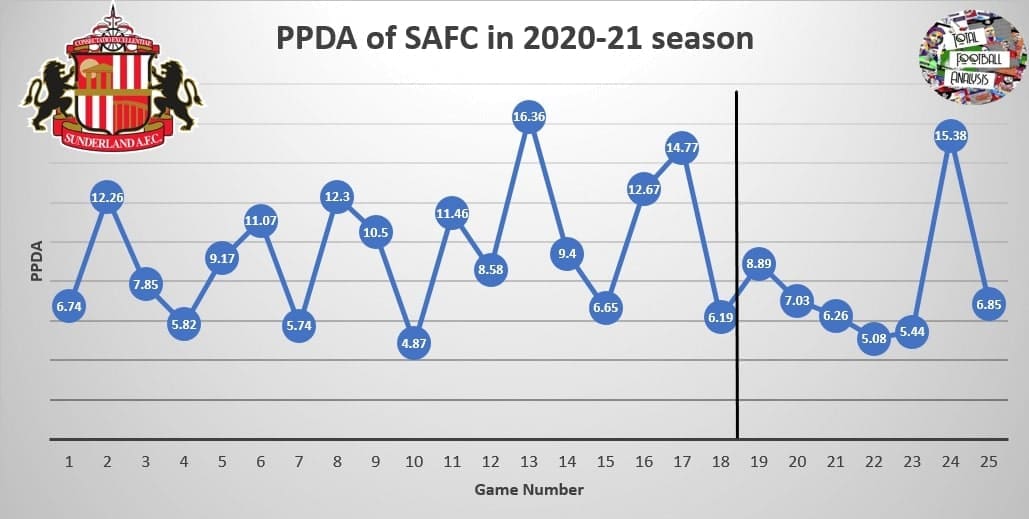
High intensity pressing
The details of Sunderland’s high pressing are tweaked slightly given to the strengths and weaknesses of different opponents. In general, it was neither not a man-oriented scheme, and more tend to a ball-oriented system than a zone-oriented system. The main strategy was to get more numbers than the opponents around the ball to achieve the following benefits:
- Forced long balls and regain through aerial duels
- Forced verticality to press closed bodies
- Cutting off passing options around and forcing errors
- Vertically pressing and attack the ball to force errors or low quality passes
- Creating favourable situations to double-press
The major concern of the pressing player was to attack the ball and the opponent quickly, hence, they should not be afraid of leaving their original initial marking targets, and curving the runs to shadow passing lanes are largely unnecessary.
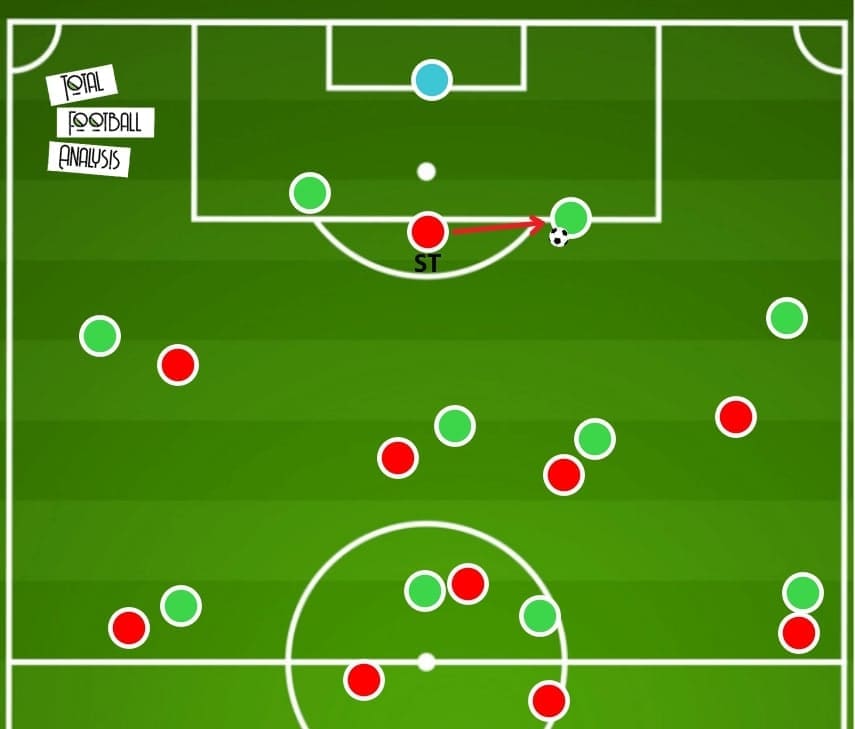
As mentioned, the tactics might change according to the opponent. Sometimes the strikers lead the press if Johnson does not want the centre-backs to play easily. This was the situation against Oldham Athletic, and we show the press in the above sheet.
The subject of the trigger was simple, whenever the keeper rolled or passed the ball to the centre-back, or the centre-back exchanged a pass, the striker should instantly jump onto the receiver and pressed him. Then, it was hugely predictable on the coming events, including playing directly in the air or the striker receiving the ball with closed bodies because of the verticality. Sunderland had the ways to deal with them, we would explain them later.
Nevertheless, we should note that a prerequisite for the striker’s initial positioning was to stay between the centre-backs. This would help him to cut the passing lane between them while pressing either one, or else the offensive side could circulate the ball easily.
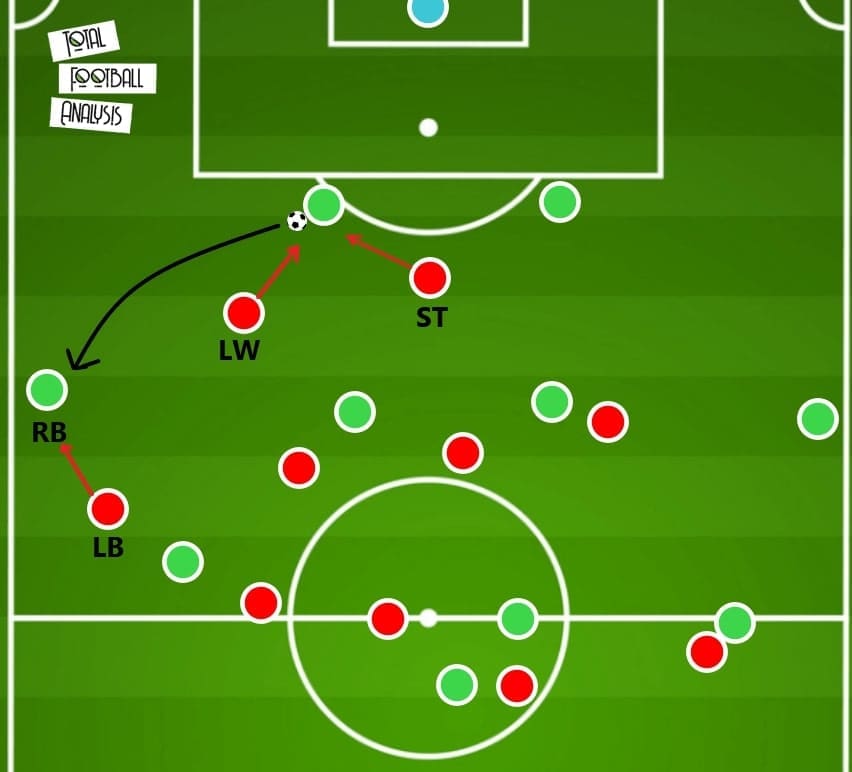
The image above shows another form of pressing, which was more common to see as Charlie Wyke might not offer the same intensity as Grigg did. Instead of striker leading the line, it was the winger closer to the centre-back to press him. He could sometimes join by the striker, but the most important is to pressing with full speed without slowing them before attacking the ball. Hence, the behaviours to shadow are wide zone is not required.
If the opponents were direct, then they would kick the ball long and it would be an aerial battle at the backline. However, some centre-backs were good enough to find the full-backs even the angle was limited, so the Sunderland full-back must also step up at the same time to put immediate pressure in case that happened.
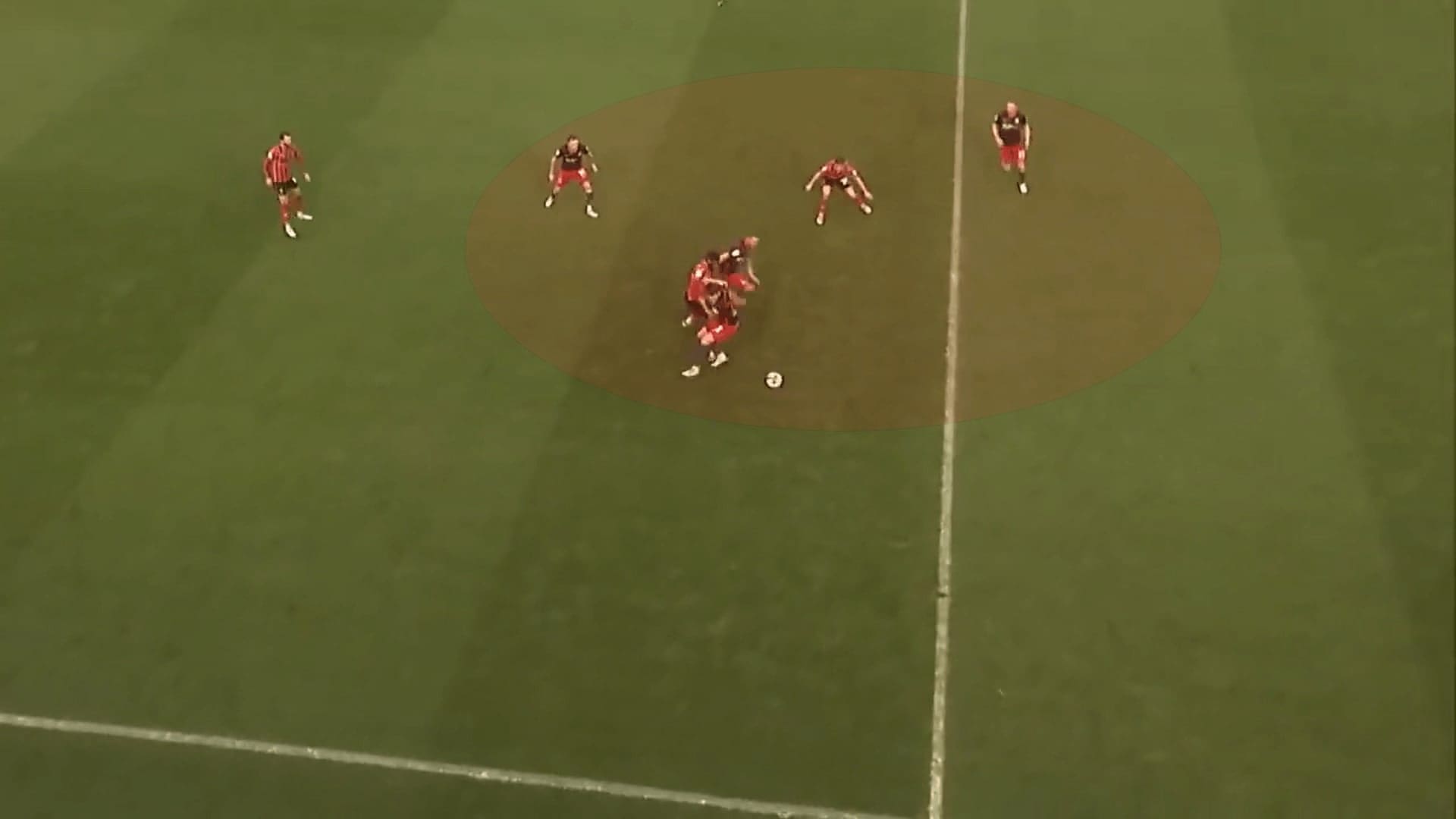
Given the ball-oriented scheme, it was very likely to see a lot of Sunderland players surrounding the ball, gaining a numerical advantage over the opponent. For example, the above image was a consequence of a lofted goalkeeper kick to full-back.
That kick triggered the winger and left-back of Sunderland to immediately attacking the receiving player. Meanwhile, the midfielder should always move to the ball half to try covering options nearby. In the EFL League One, most players would not be able to break the press efficiently in such a tight area. Here, it was a Black Cats 4v2 in the highlighted zone with two players attacking the ball, regaining possession.
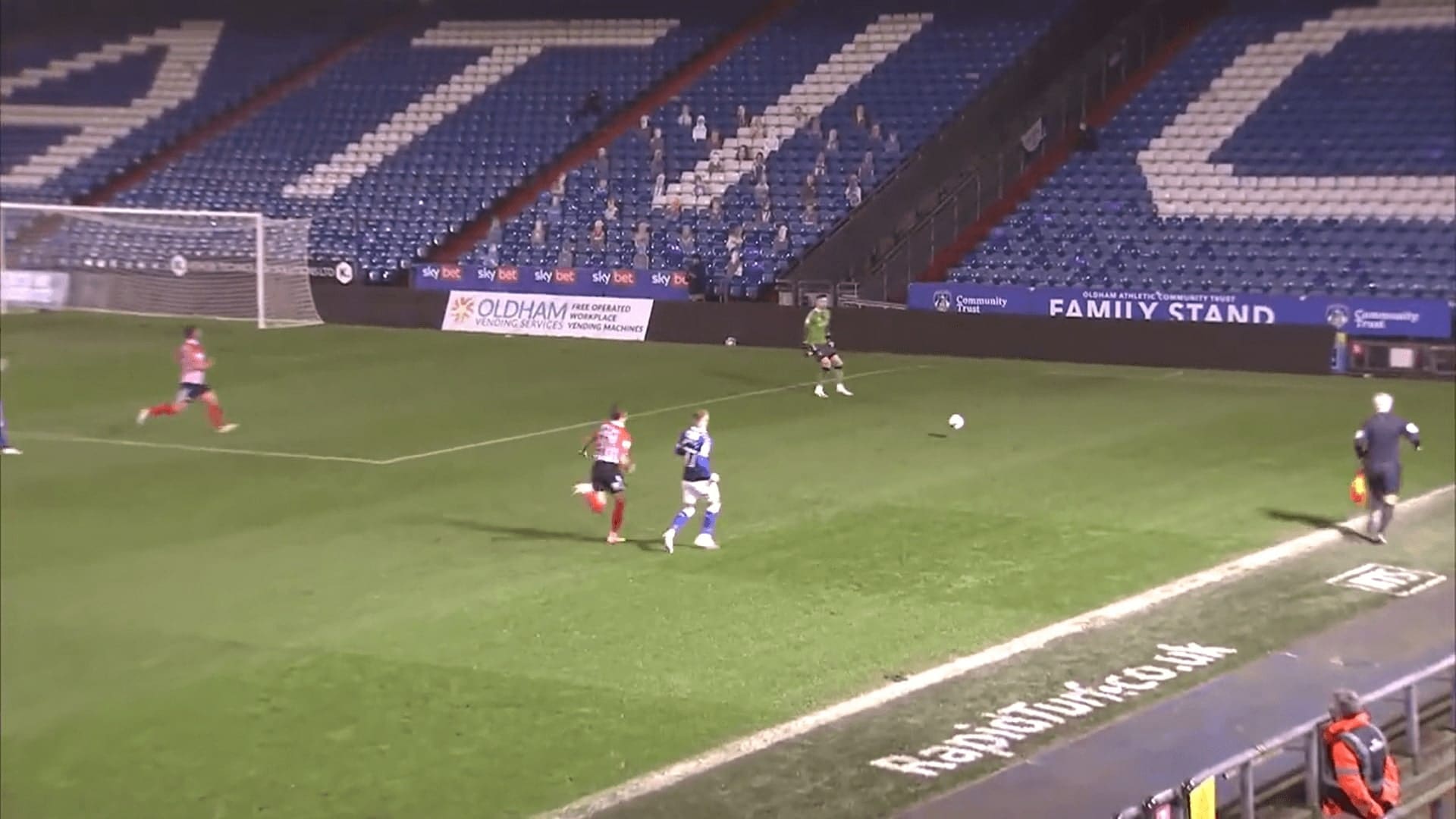
Sometimes more than one Black Cats pressed the keeper at the same moment. It was because the intensity matters, more than covering zone or opponents. You could always hear a voice shouting “tight”, “up”, and “stay tight” during their game. The coach wants to dictate the rhythm and keep the opponent mentally stressed by pressing relentless high, so players must run for the ball.
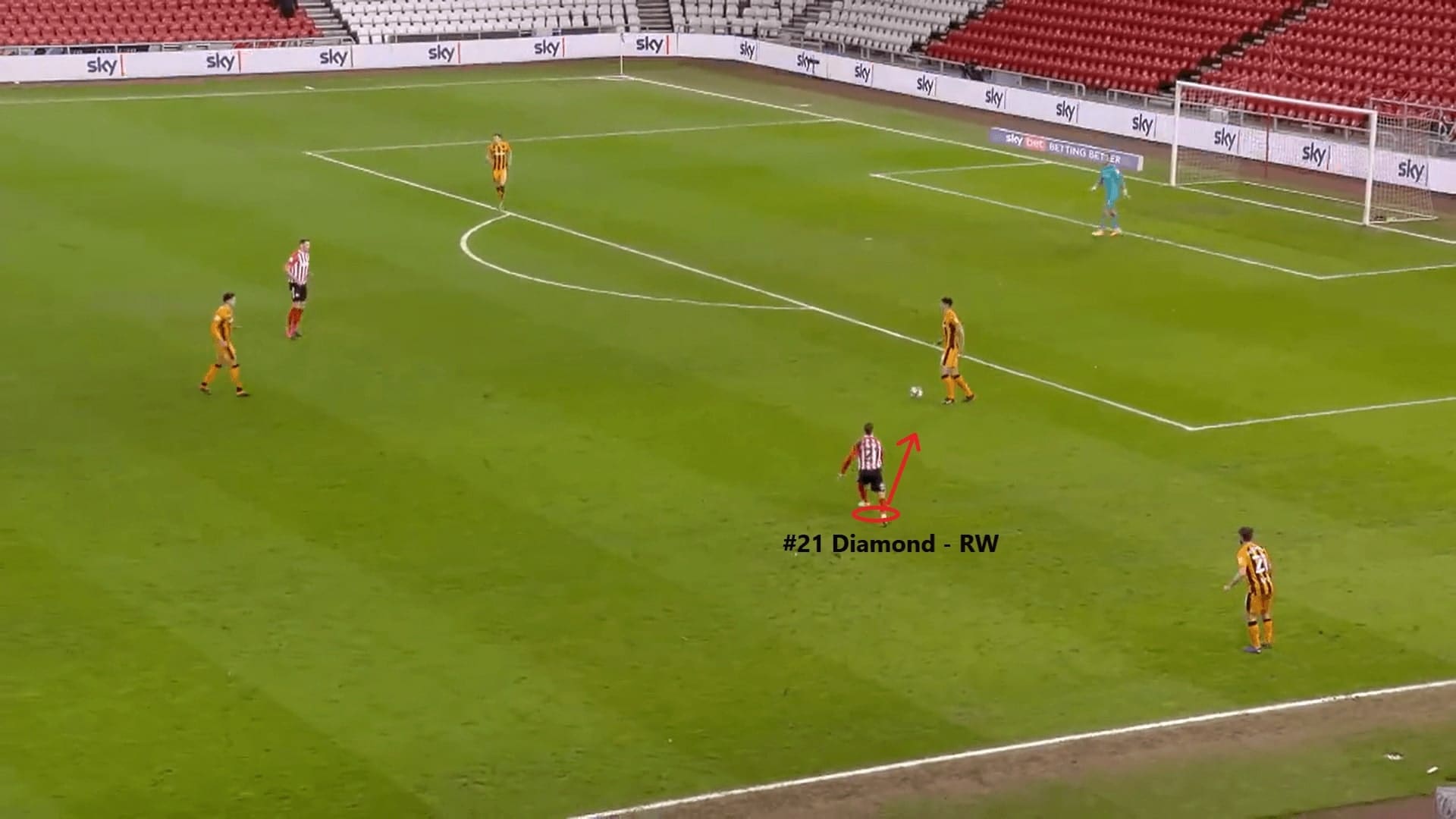
The scenario above is a winger (Jack Diamond) initiating the press on the central defenders. By that direct run towards the opponent, he must quickly make a decision such as passing to teammates or dribbles, which was error-prone under pressure.
If the opposition centre-back had the verticality to find the dropping strikers, then, the receiving player was often closing his bodies. In that case, the centre-back should never hesitate but to pressure from his back tightly and aggressively. Meanwhile, midfielder/striker from higher position must go back to press the receiving player from another angle, so there were two pressuring angles towards the ball. This cooperative strategy was a good tool to recover possession.
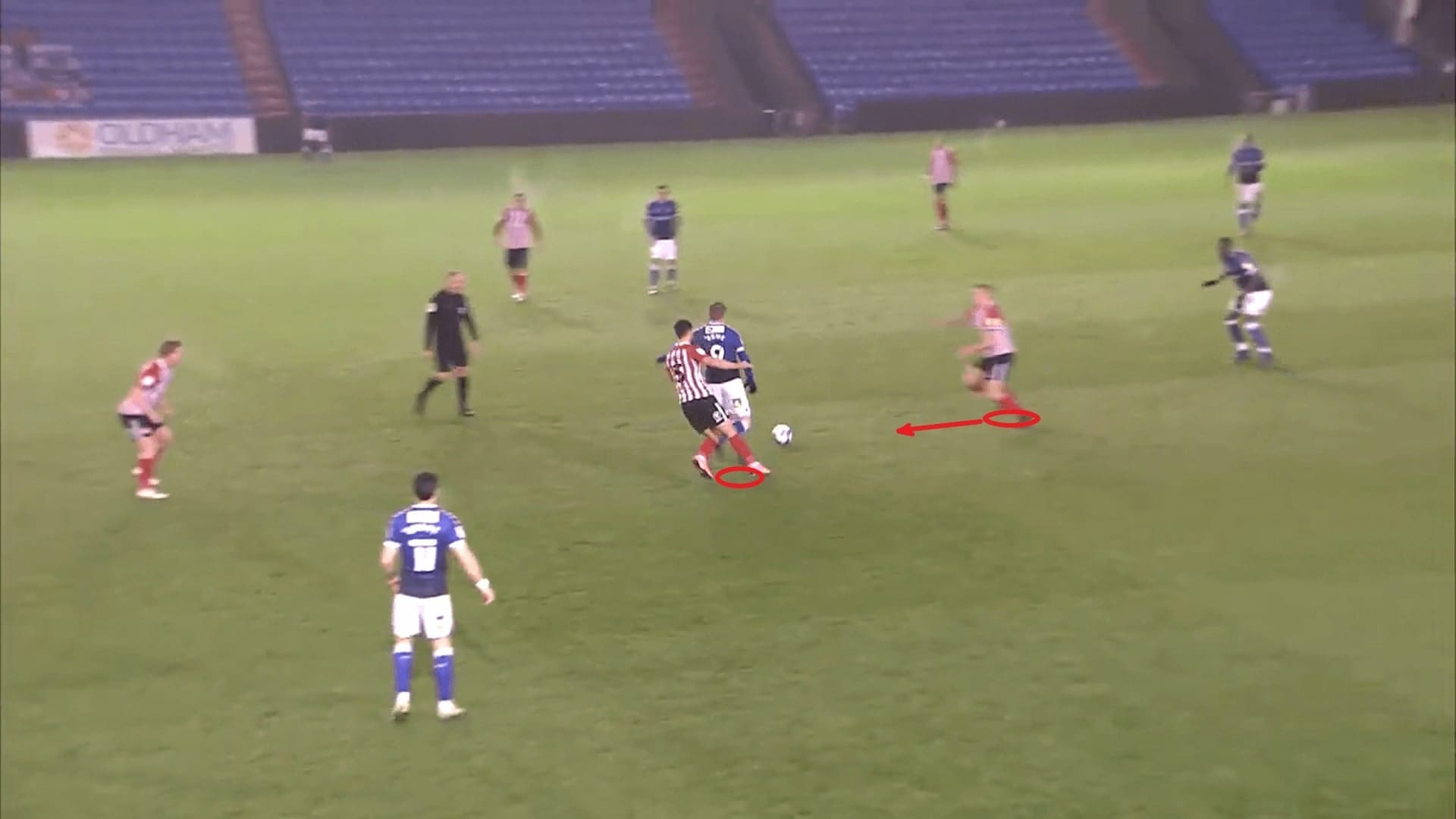
Players are supportive to cover each other
One domain that Sunderland have done very well was to demonstrate how football should be played as a team. Defensively, this suggests the players should be covering and supporting each other by staying tight as a unit. This would complete Johnson’s instruction to attack the ball, as this action itself always carries the risk of failure, and some good players could simply dribble past the pressing player even under pressure.
Therefore, other Black Cats around the pressing one must be fully aware of this potential risk, so when one did not stop the progression, the other one instantly attacks the ball – “re-press”.
For example, the first player (at the higher position) was bypassed, so the midfielder jumped onto the ball and pressed him, eventually they could regain the ball.
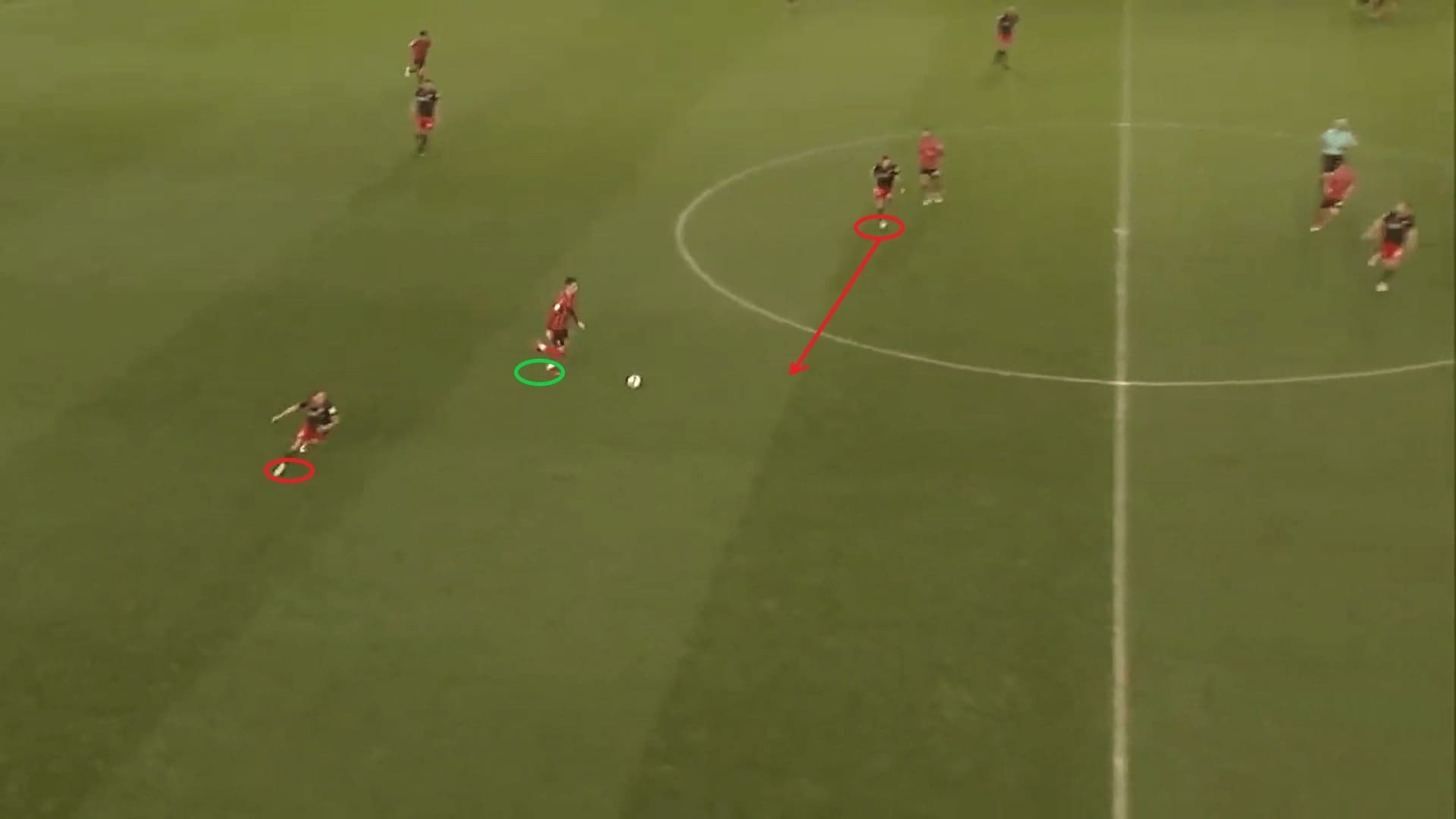
If the attack was forced sideways, for example, the centre-back was good at finding the full-back, it would instantly trigger the re-press (i.e. second wave of the press), which was a trap of Sunderland. In those cases, the full-back would jump onto the full-back, who was very likely closing his body to receive the ball. Then, it would be much easier to challenge from the blindside while benefiting from the boundaries of touchlines.
The below case shows the striker and winger pressing the same player, which was a situation we have explained above. Even under pressure from two angles, the centre-back still managed to find the left-back. However, the left-back (#17 Jordan Barnett) closed his body because of retreating to deeper areas to receive the ball.
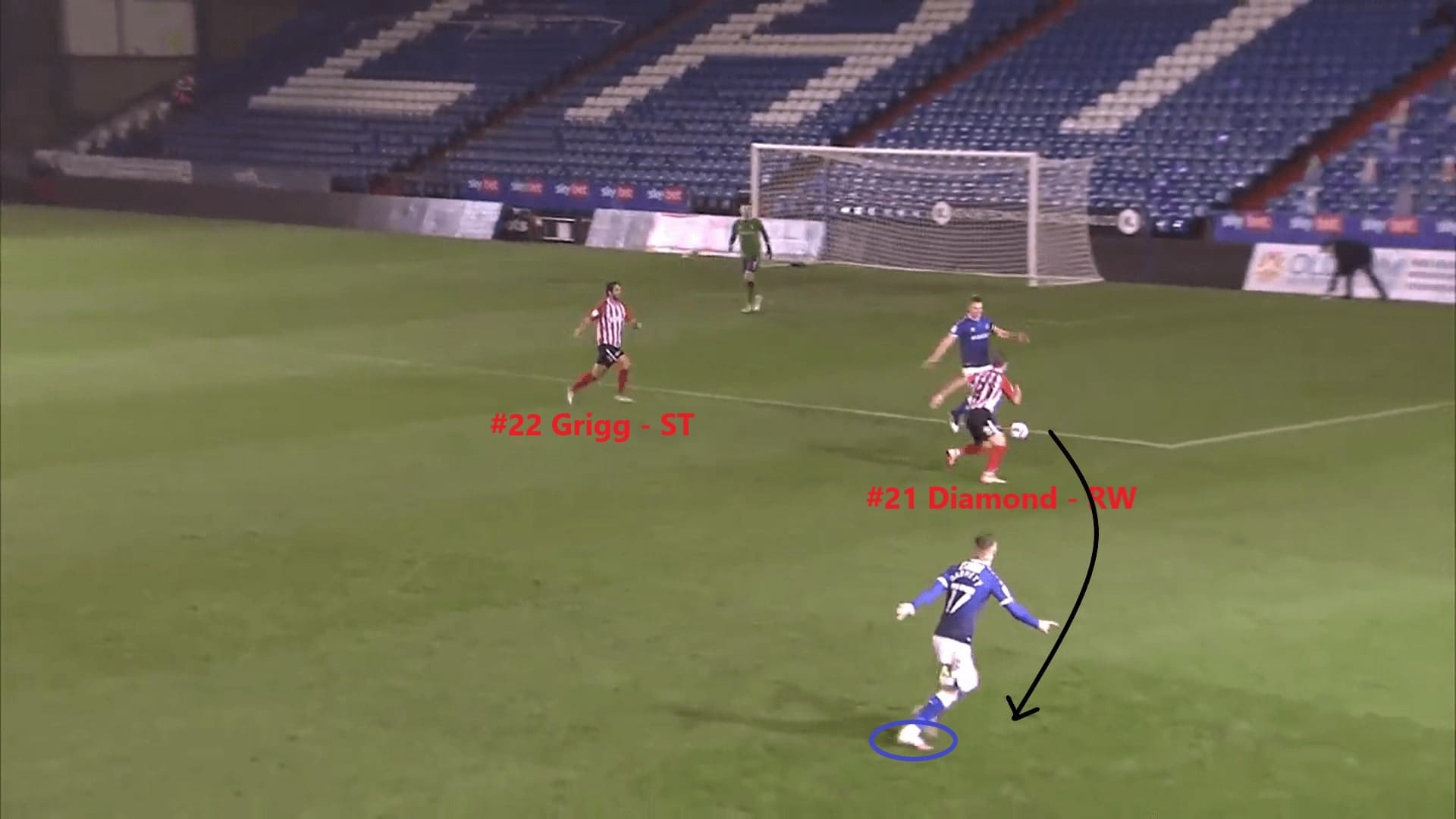
Diamond and Grigg went for the ball without hesitation above as they were confident of the defensive cover provided by the right-back. Another subject of pressing trigger was closed body, so the Black Cats must get extremely tight in that case.
Conor McLaughlin supported by the pressing duo and forced Barnett to return the ball in one-touch. At that moment, it was a 3v2 numerical overload in the wide zone, and the only way for Oldham to get out was forced to play long – one of the objectives of the press.
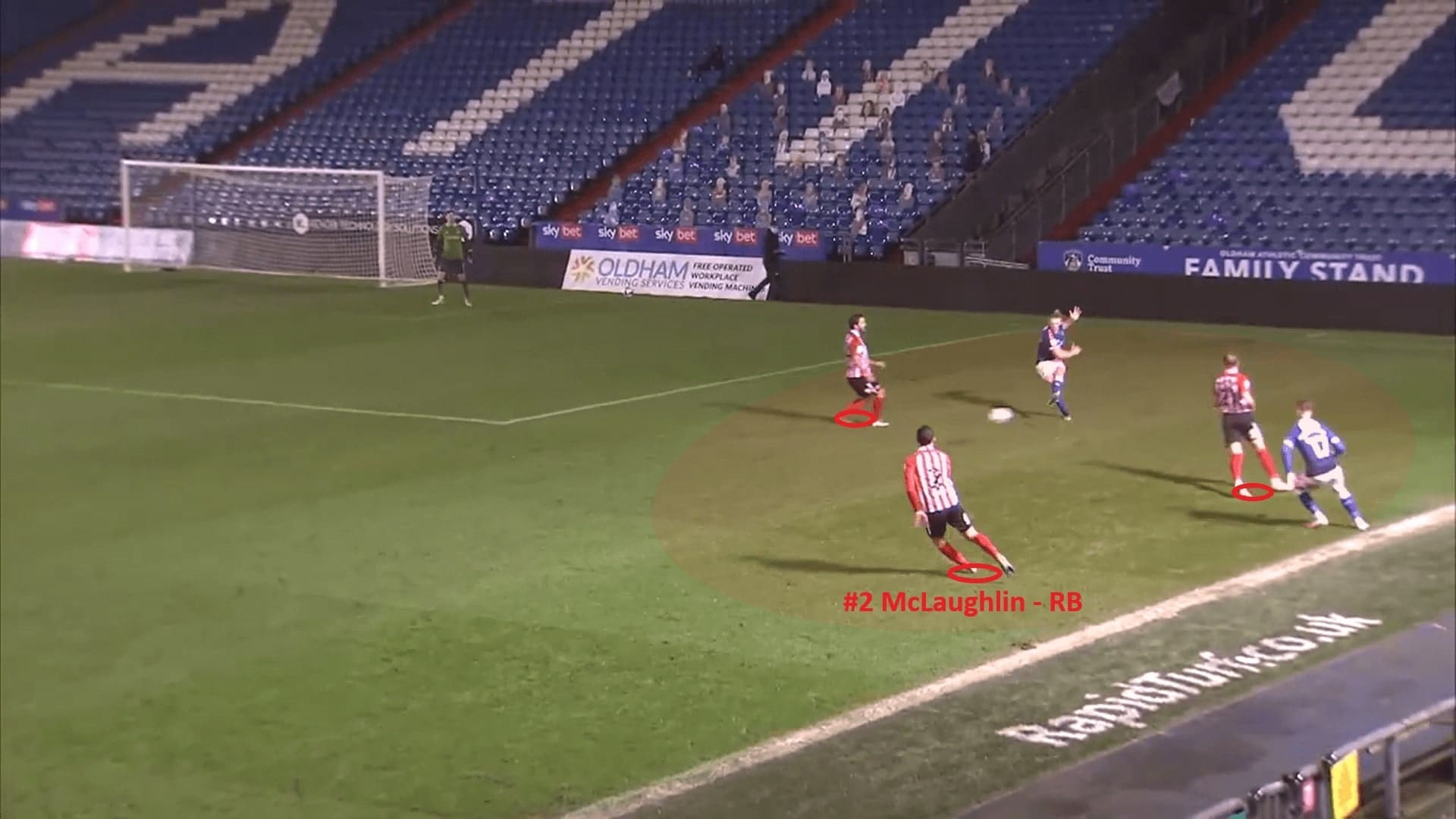
One more example, another subject of trigger below – return passes. When one Sunderland player was pressing a defender and he returned the pass to the keeper, the pressing player should also sprint towards the keeper. This intensity would always invite the keeper to play a long ball.
For example, the left-back returned to the keeper, the pressing player (#8 George Dobson) needs to go for the ball.
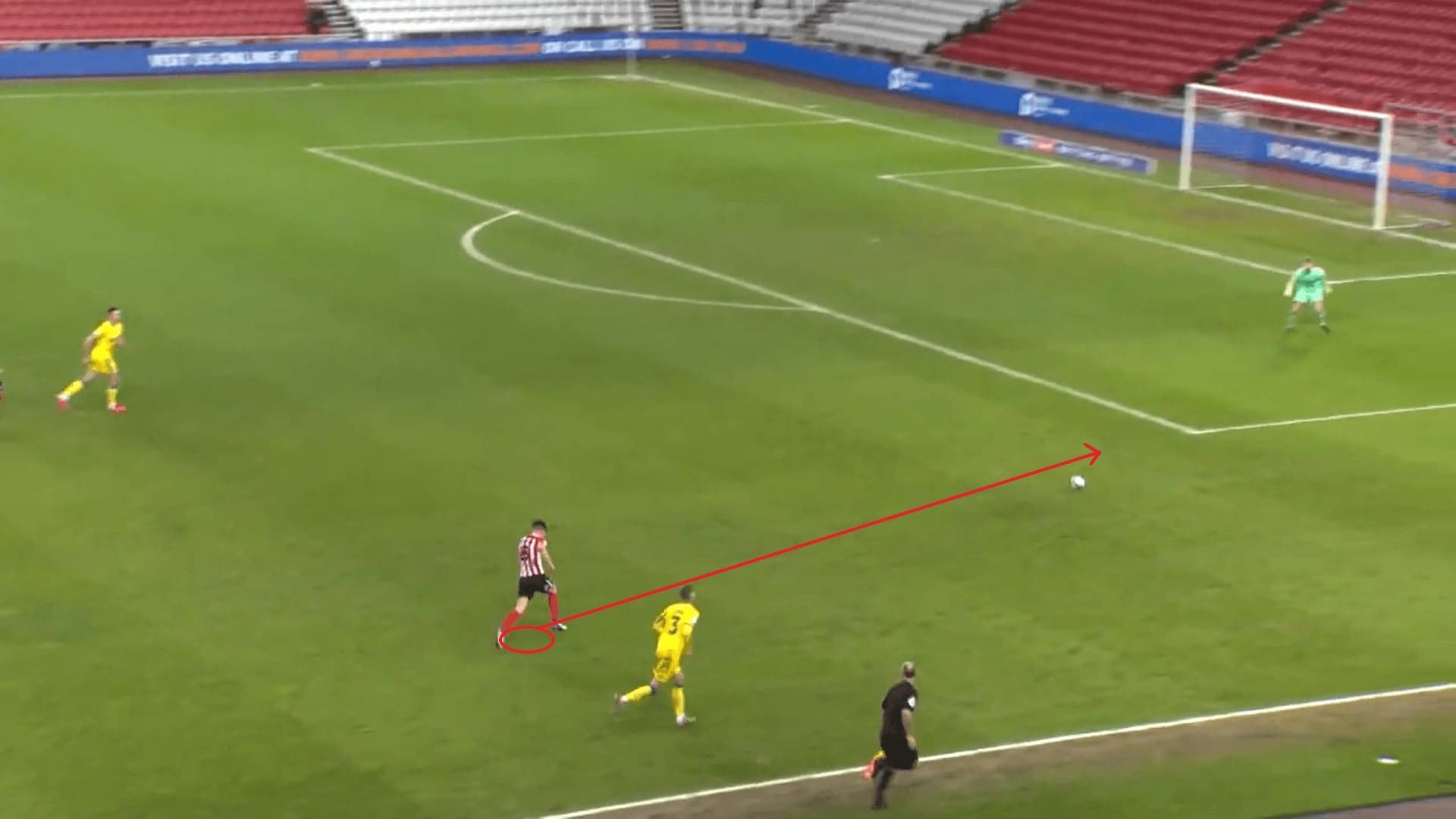
And even the keeper was technically good enough to get back to the left-back, another Black Cat has arrived to press. Meanwhile, Dobson was also going back to pressure the ball, and the double-angle of pressure have forced the opposition to kick the ball away.
This means even off-the-ball, Sunderland was dominating the game by dictating the tempo, it was very important to prevent the oppositions from developing the attacks.
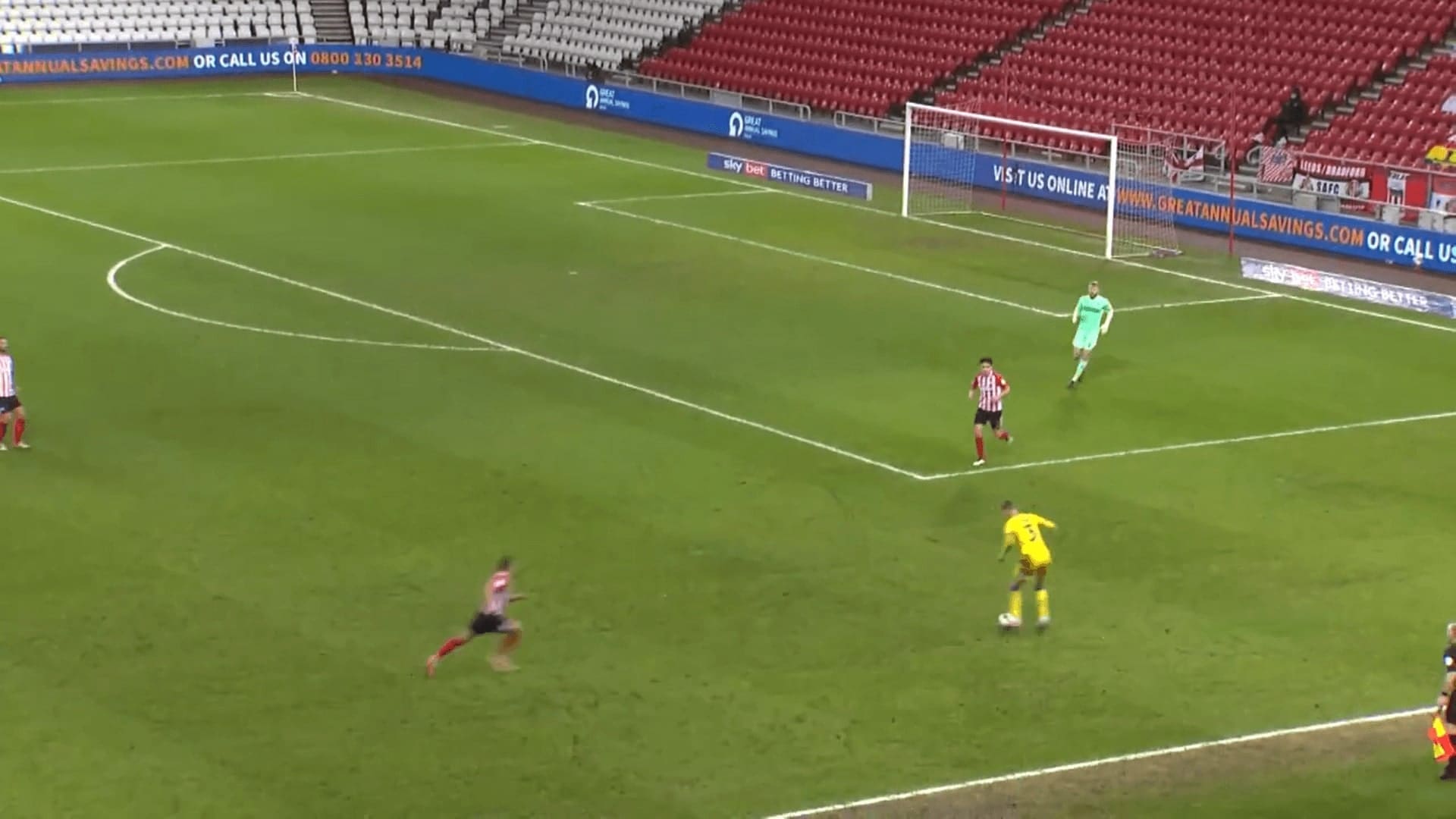
Final remarks
After showing these examples, clearly that Sunderland had developed a good strategy to press the ball in multiple angles. The listed objectives above are largely achieved in the process. Despite all the positive qualities mentioned in this analysis, Johnson’s Sunderland were far from perfect. In the transitions, they conceded plenty of counter-attacking opportunities which might lead to backfire. However, the pressing scheme and intensity should be a good tool to avoid conceded chances in the defensive phase.
Also, from an offensive point of view, they would need better strategies to score goals. The attack development somehow focused a lot at flanks given the wide players they had, but how to break from the wide areas into the centre was also a key topic to address in the future.





Comments